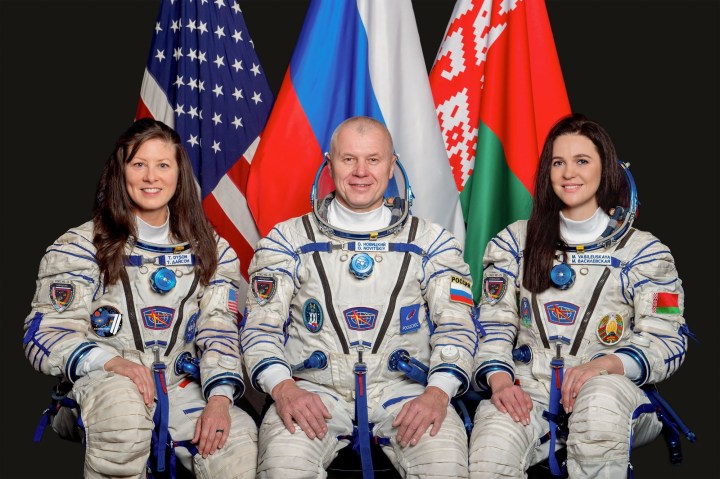
This Thursday will see the launch of one NASA astronaut and two other crew members to the International Space Station (ISS), traveling on a Russian Soyuz vehicle. The crew includes a Russian cosmonaut and the first Belarusian in space.
The launch will be livestreamed by NASA, and we’ve got the details on how to watch below.
What to expect from the launch

Three crew members will launch on a Roscosmos Soyuz MS-25 spacecraft from the Baikonur Cosmodrome in Kazakhstan and travel to the ISS for a stay. The crew includes NASA astronaut Tracy C. Dyson, who will join the ISS crew and spend six months on board, plus Roscosmos cosmonaut Oleg Novitskiy and spaceflight participant Marina Vasilevskaya of Belarus, who will spend 12 days on the station.
Vasilevskaya, a flight attendant, will become Belarus’s first astronaut in space as part of a deal between Russia and Belarus to perform a joint space mission. As a prominent ally of Russia, Belarus has supported Putin throughout the invasion of Ukraine, though NASA has refrained from commenting on the international situation as it applies to this space mission.
When the flying of integrated crews was announced in 2022, NASA wrote in a statement that, “Flying integrated crews ensures there are appropriately trained crew members on board the station for essential maintenance and spacewalks. It also protects against contingencies such as a problem with any crew spacecraft, serious crew medical issues, or an emergency aboard the station that requires a crew and the vehicle they are assigned to return to Earth sooner than planned.”
How to watch the launch
NASA will live-stream the launch, with coverage beginning at 8:20 a.m. ET on Thursday, March 21. The launch itself is scheduled for around one hour later, at 9:21 a.m. ET.
Coverage will also include the rendezvous and docking of the spacecraft with the ISS, followed by the hatch opening of the space station and the welcoming of the new crew members. Rendezvous is scheduled for 11:30 a.m. ET, with docking at 12:29 p.m. and hatch opening at 2:50 p.m.
You can watch the live stream either by using the video embedded at the top of this page or by heading to NASA’s YouTube page for the event.
Editors’ Recommendations






